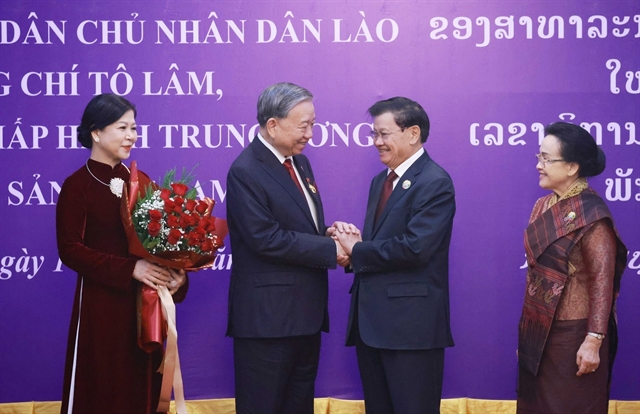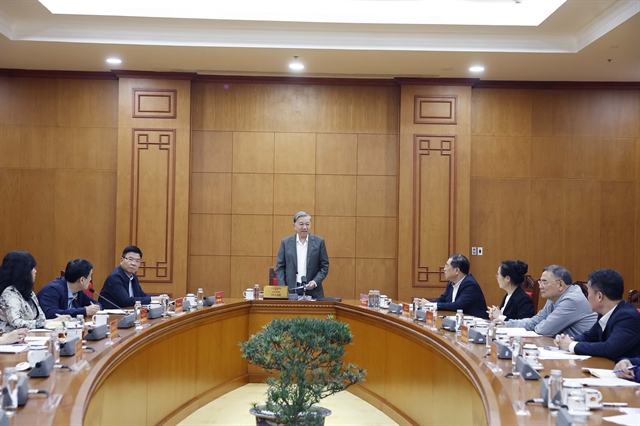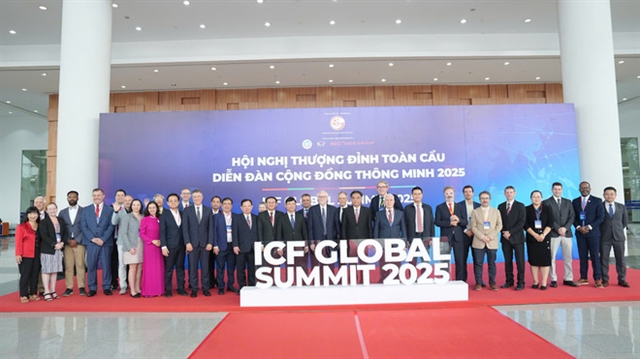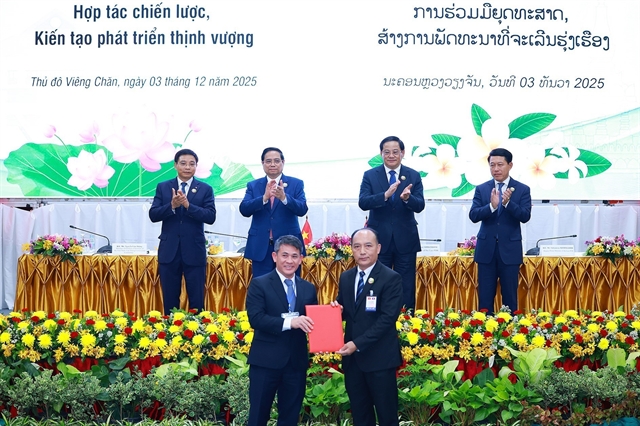 Opinion
Opinion

 |
| Policy choices should be designed with a conscious goal to leverage AI’s potential to enhance human capabilities and quality of life, according to the United Nations Development Programme. Image courtesy of UNDP |
Ramla Khalidi*
UNDP’s 2025 Human Development Report (HDR) shines a spotlight on the new AI era. Launched on May 6, the HDR examines what the AI age could mean for human development.
It argues that the impact of AI on people’s well-being and societal progress is far from inevitable and that choices humans make today will shape the future – for better or worse. It demonstrates how choices that ensure AI deployment is ethical, inclusive and sustainable can support countries to reap the full benefit of AI, and avoid a deepening of existing divides.
In 2023, Việt Nam’s Human Development Index (HDI) score rose to 0.766, from 0.726 one year earlier. This improvement is to be recognised and celebrated. Yet, like many other countries, the HDI score conceals persistent inequalities. When adjusted for inequality, the HDI for Việt Nam drops to 0.641, representing a 16.3 per cent loss due to disparities in health, education and income dimensions. This loss is similar to the average inequality loss across East Asia and the Pacific. Understanding the drivers of these inequalities and taking them into consideration will be key to ensuring that the deployment of AI considers the differentiated needs of all.
AI and inequality
Globally, there is an 'AI equity gap' that threatens to increase existing inequalities and undermine the ability of low- and middle-income countries to harness AI for public goods (e.g. improving health care, climate adaptation, or digital governance). This goes well beyond access to the internet. While one in every three people worldwide don’t have internet access, only two per cent of the world's data centres are in Africa, meeting the computing power needs of only five per cent of AI innovators.
New GenAI technologies, like ChatGPT, are seeing growth and adoption at rates unlike anything else we’ve seen before, reaching 100 million users in only two months. Compare that with fixed phone lines, which took 75 years to achieve the same. Digital technology and AI have the potential to contribute US$15.7 trillion to the global economy by 2030, but only 10 per cent of this will be in the Global South.
Making AI work for human development
We need to design our policy choices with a conscious goal to leverage AI’s potential to enhance human capabilities and quality of life.
AI can be deployed in sectors where positive spillovers can be leveraged, augmenting rather than replacing jobs, increasing productivity and developing strategies to maximise impact, while mitigating potential adverse effects.
AI has also enabled innovations in assistive and accessible technologies that can expand choices and opportunities for people with disabilities, technologies such as live captioning and translation of sign language into voice or text. Beyond individual stories, AI holds immense potential for reshaping public services, healthcare systems, agricultural productivity and disaster preparedness, underscoring its critical role in inclusive socio-economic development. If human development elements are central in the design stage, the deployment of AI can increase human agency and quality of life.
As Việt Nam scales up its AI ambitions, it must do so with a critical eye on environmental sustainability. AI systems, particularly large language models and data-intensive applications, consume vast amounts of energy—raising concerns about carbon emissions and environmental impact. Policy efforts must integrate environmental assessments into digital infrastructure planning, promote renewable energy adoption in AI deployments, and incentivise green innovation. AI should not just be smart—it must be sustainable.
Investing in capabilities
Education systems must equip learners with future-relevant skills to thrive in an AI-driven world. Preparing the future workforce for AI demands holistic, adaptive education systems. Education will need to move beyond increasing years of schooling, to focus on quality of education and skill enhancements. AI’s flexibility and adaptability could be used to tailor learning in different contexts to achieve suitable learning outcomes.
AI governance
Researchers reveal that while AI holds undeniable promise for sustainable development, there is an imbalance in representation in global AI governance discourse that often reflects Global North concerns (e.g., algorithmic bias, privacy) while neglecting systemic disparities between countries. A study analysing prominent global AI ethics documents found that the majority comes from Global North, with 40 per cent originated from just two countries: the US and the UK, with very limited contributions from the Global South. Moreover, answers generated by AI are largely blind to the perspectives of people in the Global South.
This dominance may lead to a distortion in AI policy development and the design of ethics frameworks.
Harnessing AI in Việt Nam
Việt Nam’s national AI vision, articulated in Decision No 127/QĐ-TTg and supported by Resolution No 57-NQ/TW on breakthroughs in Science, Technology and Innovation (STI) development, prioritises significant investment in STI.
At the 2025 AI Semiconductor Conference (AISC) Prime Minister Phạm Minh Chính called for “a comprehensive, global, and inclusive approach in AI development that emphasises international solidarity and cooperation to collectively build a better world.” He announced plans for training 100,000 engineers in semiconductor and AI technology and pledged to protect people's safety, security and mitigate potential technological risks.
In UNDP’s recent Việt Nam AI Landscape assessment (AILA), we shared how this vision is being translated through action, including through local AI Champions who used AI to improve delivery of public services.
Yet, institutional frameworks continue to be both a bottleneck and a potential breakthrough area for Việt Nam's AI and semiconductor ambitions. As articulated by PM Chính, Việt Nam needs to streamline governance, significantly reduce administrative procedures by at least 30 per cent and decentralise authority and resources effectively to foster innovation at all levels.
There is a window of opportunity to proactively foster ethical and responsible AI deployment, transforming current constraints into creative opportunities. Today, we have a choice, to ensure that AI becomes a force for equity, sustainability, and human progress in Việt Nam’s transformation journey. VNS
* Ramla Khalidi, UNDP Resident Representative in Việt Nam.




